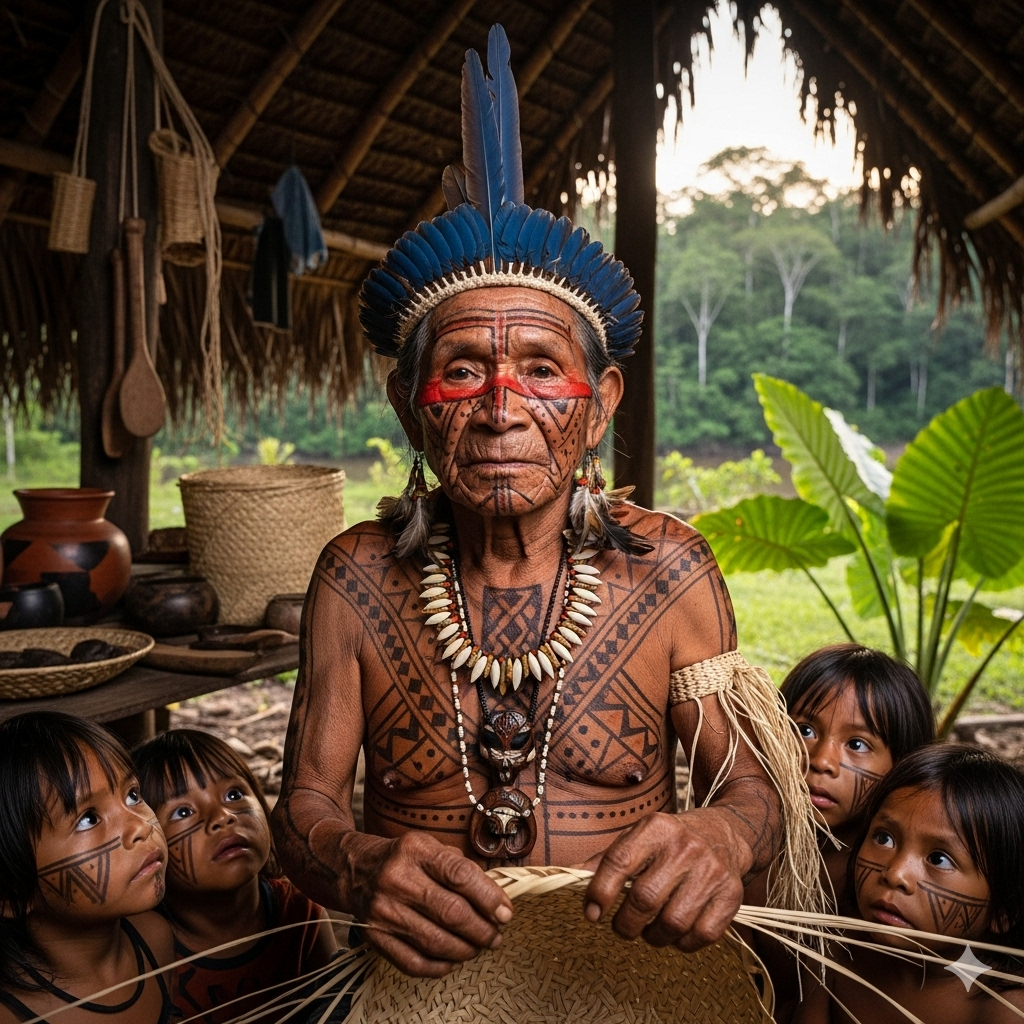
Culture & Heritage: Daupara | Indigenous Rights, Amazon Conservation & Culture
Introduction
The Amazon rainforest is not only a sanctuary of biodiversity but also a cradle of ancient cultures, traditions, and languages. For Indigenous peoples, culture and heritage are inseparable from the forest itself. Every song, story, ritual, and craft is tied to the rivers, trees, and animals that sustain life.
At Daupara, the focus on Culture & Heritage is a celebration of this richness. It is about honoring the voices of elders, protecting traditions from erasure, and ensuring that future generations inherit the wisdom of their ancestors.
Languages: Voices of the Forest
Language is the soul of culture. Across the Amazon, hundreds of Indigenous languages are spoken, each carrying unique worldviews and ecological knowledge.
-
Oral Traditions – Stories, myths, and histories are passed down orally, keeping memory alive.
-
Language Revitalization – Efforts are underway to document and teach Indigenous languages to younger generations in schools and communities.
-
Worldviews – Each language contains unique concepts about time, nature, and spirituality that cannot be translated fully.
Protecting these languages means preserving not just words but entire ways of seeing the world.
Rituals, Ceremonies & Spirituality
Spiritual life is central to Amazonian culture. Rituals and ceremonies strengthen ties between people, land, and the spirit world.
-
Healing Ceremonies – Shamans use sacred plants and chants to restore balance between body, spirit, and nature.
-
Seasonal Celebrations – Festivals mark harvests, river cycles, and celestial events.
-
Sacred Sites – Rivers, mountains, and forests are honored as living beings deserving respect.
These practices are not relics of the past but living traditions that guide communities in maintaining harmony with nature.
Art, Craft & Storytelling
Creativity is woven into daily life in the Amazon. Cultural expressions reflect identity, resilience, and connection to the land.
-
Weaving & Textiles – Using natural fibers and dyes, artisans create intricate designs that tell stories of rivers, animals, and ancestors.
-
Body Art – Traditional tattoos and body painting express beauty, identity, and spiritual protection.
-
Myth & Storytelling – Elders share legends of creation, animal spirits, and ancestral heroes, teaching values and history.
-
Music & Dance – Flutes, drums, and songs bring communities together in celebration and ceremony.
These art forms are not only creative outlets but also vessels of cultural continuity.
Food & Traditional Knowledge
Heritage is also found in the kitchen and the fields. Traditional diets reflect deep knowledge of ecosystems.
-
Cassava & Manioc – Staple crops prepared in countless ways, sustaining communities for generations.
-
Medicinal Plants – Knowledge of healing herbs is carefully passed down by elders and healers.
-
Fishing & Hunting Practices – Sustainable methods ensure balance between consumption and conservation.
These practices are part of an ancestral science that combines nutrition, medicine, and environmental stewardship.
Challenges to Cultural Survival
Despite their resilience, Indigenous cultures face serious threats:
-
Assimilation Pressures – Globalization and urban migration risk disconnecting younger generations from traditions.
-
Loss of Land – Without forests and rivers, rituals and food practices cannot survive.
-
Language Extinction – Many Indigenous languages are at risk of disappearing within a generation.
-
Cultural Appropriation – Traditional art and symbols are often taken without respect or acknowledgment.
Daupara works to highlight these challenges and support cultural defense efforts led by Indigenous communities themselves.
Passing Heritage to the Next Generation
For Indigenous peoples, heritage is not locked in museums—it is lived every day. Teaching children to farm, fish, weave, sing, and speak their language ensures continuity.
-
Intergenerational Learning – Elders are respected as keepers of wisdom and teachers of culture.
-
Community Schools – Some villages are creating educational models that blend Indigenous traditions with modern tools.
-
Youth Leadership – Young Indigenous leaders are using digital platforms to share their culture globally while staying rooted in tradition.
This balance between old and new ensures that Amazonian cultures remain vibrant and adaptive.
Conclusion
“Culture & Heritage” is the beating heart of the Amazon. It is found in languages, rituals, art, and daily practices that sustain both identity and resilience. For Indigenous peoples, protecting culture is inseparable from protecting land and life itself.
Daupara celebrates and defends this heritage, ensuring that the voices, traditions, and creativity of Indigenous nations are respected and passed on.
In honoring Indigenous culture, we also honor the truth that the Amazon is not only a forest to be conserved, but also a cultural universe to be cherished.